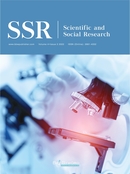Abstract
The problem of population aging poses new challenges to the quality improvement and quality maintenance of the pension institution. The purpose of this study is to provide ideas for improving the service quality of senior care by analyzing the existing rating reports of the pension institution in Guilin. Since 2018, a rating system for pension institution has been established in various parts of China. These 1-5 star evaluation standards similar to hotel ratings have greatly improved the service quality of Pension institution. This study found that based on the current rating results of the pension institution in Guilin, combined with some of the characteristics of the pension institution themselves, and using traditional text mining and statistical analysis methods can help a pension institution improve their own ratings. Current statistics find that the higher ratings of pension institution have a lot to do with their own asset size, affiliation, time of establishment, geographical factors, and regulatory agencies. The results of this study can be used to improve the rating of Guilin pension institutions.
References
Yu P, Jiang T, et al., 2020, The Contribution of Electronic Health Records to Risk Management Through Accreditation of Residential Aged Care Homes in Australia. BMC Med Inform Decis Mak, 20(1): 58.
Jiang T, Yu P, et al., 2016, The Impact of Electronic Health Records on Risk Management of Information Systems in Australian Residential Aged Care Homes. Journal of Medical Systems, 40(9): 1-7.
Jiang T, Yu P, et al., 2017, Text Data Mining of Aged Care Accreditation Reports to Identify Risk Factors in Medication Management in Australian Residential Aged Care Homes. Stud Health Technol Inform, 245: 892-895.
Department of Elderly Services, 2020, The Guidelines for the Implementation of the National Standards on Grading and Evaluation of Elderly Care Institutions (Trial) Were Released, Ministry of Civil Affairs of the People’s Republic of China. http://www.mca.gov.cn/article/xw/ywdt/202004/20200400027207.shtml (updated on April 28, 2020).
Jiang T, Yu P, 2014, The Impact of Electronic Health Records on Client Safety in Aged Care Homes. Stud Health Technol Inform, 201: 116-23.
Mu H, Zhang F, Xu C, et al., 2021, Discovering and Analyzing Internet of Things (IoT) Technologies and Applications for Aged Care. Journal of Physics: Conference Series, 1948(1): 012141.
Qian SY, Yu P, Zhang Z-Y, et al., 2012, The Work Pattern of Personal Care Workers in Two Australian Nursing Homes: A Time-Motion Study. BMC Health Services Research, 12(1): 305.
Stern C, Klein DB, 2020, Stockholm City’s Elderly Care and Covid19: Interview with Barbro Karlsson. Society, 2020: 1-12.
Perrotta F, Corbi G, Mazzeo G, et al., 2020, COVID-19 and The Elderly: Insights into Pathogenesis and Clinical Decision-Making. Aging Clin Exp Res, 32(8): 1599-1608.
Kunz R, Minder M, 2020, COVID-19 Pandemic: Palliative Care for Elderly and Frail Patients at Home and in Residential and Nursing Homes. Swiss Med Weekly, 150: w20235.
Jiang T, Yu P, 2015, The Relationship between Using Electronic Health Records and Meeting Accreditation Standards for Client Safety in Residential Aged Care Homes. Stud Health Technol Inform, 214: 8-134.
